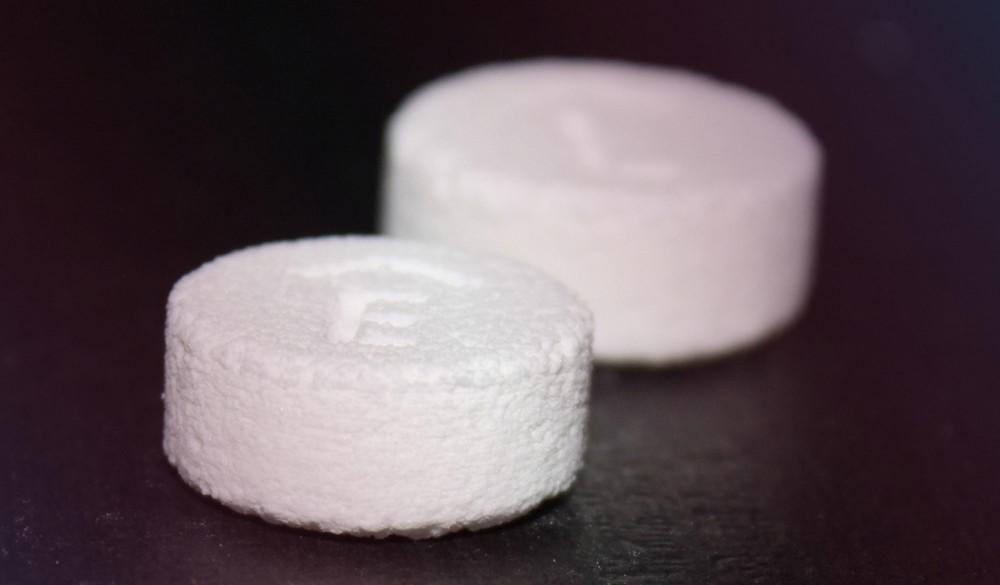 One of the largest hurdles that healthcare practitioners treating epilepsy need to overcome is often with their own patients. It turns out that an estimated 30 to 50 percent of epilepsy patients don’t adhere to the drug regimens prescribed to them. The reasons for noncompliance, however, are rarely due to patient’s being willfully defiant of their doctor’s orders, but often much more mundane. Forgetting to take pills regularly is common for all of us, and for some patients, specifically the elderly and children, taking larger pills is often quite difficult for medical reasons, as well as simply having aversions to swallowing large dose pills.
One of the largest hurdles that healthcare practitioners treating epilepsy need to overcome is often with their own patients. It turns out that an estimated 30 to 50 percent of epilepsy patients don’t adhere to the drug regimens prescribed to them. The reasons for noncompliance, however, are rarely due to patient’s being willfully defiant of their doctor’s orders, but often much more mundane. Forgetting to take pills regularly is common for all of us, and for some patients, specifically the elderly and children, taking larger pills is often quite difficult for medical reasons, as well as simply having aversions to swallowing large dose pills.
It was with these patients in mind that Aprecia Pharmaceuticals, which specializes in developing new ways to help patients maintain compliance with their prescribed medication regimen, developed a process to make large dose medication easier to swallow using 3D printing technology. Their new manufacturing process was designed to create large dose dissolvable versions of popular medications that would not need to be swallowed. The first medication made using this process was for a commonly prescribed anticonvulsant called levetiracetam that Aprecia says will dissolve in the mouth with a small sip of liquid.
Here is a video demonstration showing exactly how quickly the pill will dissolve:
Levetiracetam is typically sold using the brand name Keppra and has already been made available in several strengths as a tablet, a liquid, and an extended-release formulation. It is typically used to help treat a wide variety of seizures in both epileptic adults and children, including myoclonic seizures, partial-onset seizures and primary generalized tonic-clonic seizures. The largest dose available, 1,000 mg, will be a rather large pill measuring about the diameter of a nickel and a height of four nickels, however because of the pill’s porous nature it won’t actually need to be swallowed but the patient can simply allow it to dissolve.
Aprecia says that the 3D printing process that they developed, called ZipDose, will make it easier for patients who are required to take large dose medications or a large number of pills daily. The proprietary manufacturing technique developed by MIT is a familiar process to the 3D printing industry. The printer is mechanically quite similar to a sand 3D printer or the Selective Laser Sintering process sans the laser. The printer will lay down a very fine layer of the drug in powder form, a printing head runs over it, dropping a small amount of a binding agent into the power and the process repeats until the pill is fully formed.
In an interview with Neurology Today, the chief executive officer of Aprecia, Don Wetherhold, explained that the 3D printed pill was porous, which would allow it to dissolve in the patient’s mouth very quickly with just a sip of liquid. The pill can vary in dosage depending on the needs of the patient, and the process even allows extremely large doses, up to 1,000 mg, to be made into a relatively compact pill.
“It has a unique capacity to dissolve at higher-dose loads. There clearly are some patients who would benefit — children, the elderly, people who have some other condition that may make it hard to swallow, such as cerebral palsy, stroke, or Alzheimer’s disease,” Wetherhold said.
The 3D printed levetiracetam pill was officially approved for use by the US Food and Drug Administration (FDA) this past August and is expected to be available sometime in 2016. Each pill will be individually packaged, and while Aprecia did not have any pricing information it is expected to be in-line with other formulations of the drug. This new version of levetiracetam will be marketed as Spritam. Aprecia is calling it the first drug manufactured using a 3D printing process, an assertion that is only partially true. Spritam will simply be the first 3D printed drug that has been approved for use, but the concept has been experimented with in the medical 3D printing market for several years now.
Let’s hear your thoughts on the use of 3D Printing within the drug industry. Discuss in the Aprecia forum thread on 3DPB.com.
Subscribe to Our Email Newsletter
Stay up-to-date on all the latest news from the 3D printing industry and receive information and offers from third party vendors.
You May Also Like
Gorilla Sports GE’s First 3D Printed Titanium Cast
How do you help a gorilla with a broken arm? Sounds like the start of a bad joke a zookeeper might tell, but it’s an actual dilemma recently faced by...
Nylon 3D Printed Parts Made More Functional with Coatings & Colors
Parts 3D printed from polyamide (PA, Nylon) 12 using powder bed fusion (PBF) are a mainstay in the additive manufacturing (AM) industry. While post-finishing processes have improved the porosity of...
$25M to Back Sintavia’s Largest Expansion of Metal 3D Printing Capacity Since 2019
Sintavia, the digital manufacturing company specializing in mission-critical parts for strategic sectors, announced a $25 million investment to increase its production capacity, the largest expansion to its operations since 2019....
Velo3D Initiates Public Offering in a Bid to Strengthen Financial Foundations and Drive Future Growth
Velo3D (NYSE: VLD) has been among a number of publicly traded 3D printing firms that have attempted to weather the current macroeconomic climate. After posting a challenging financial report for 2023,...

































